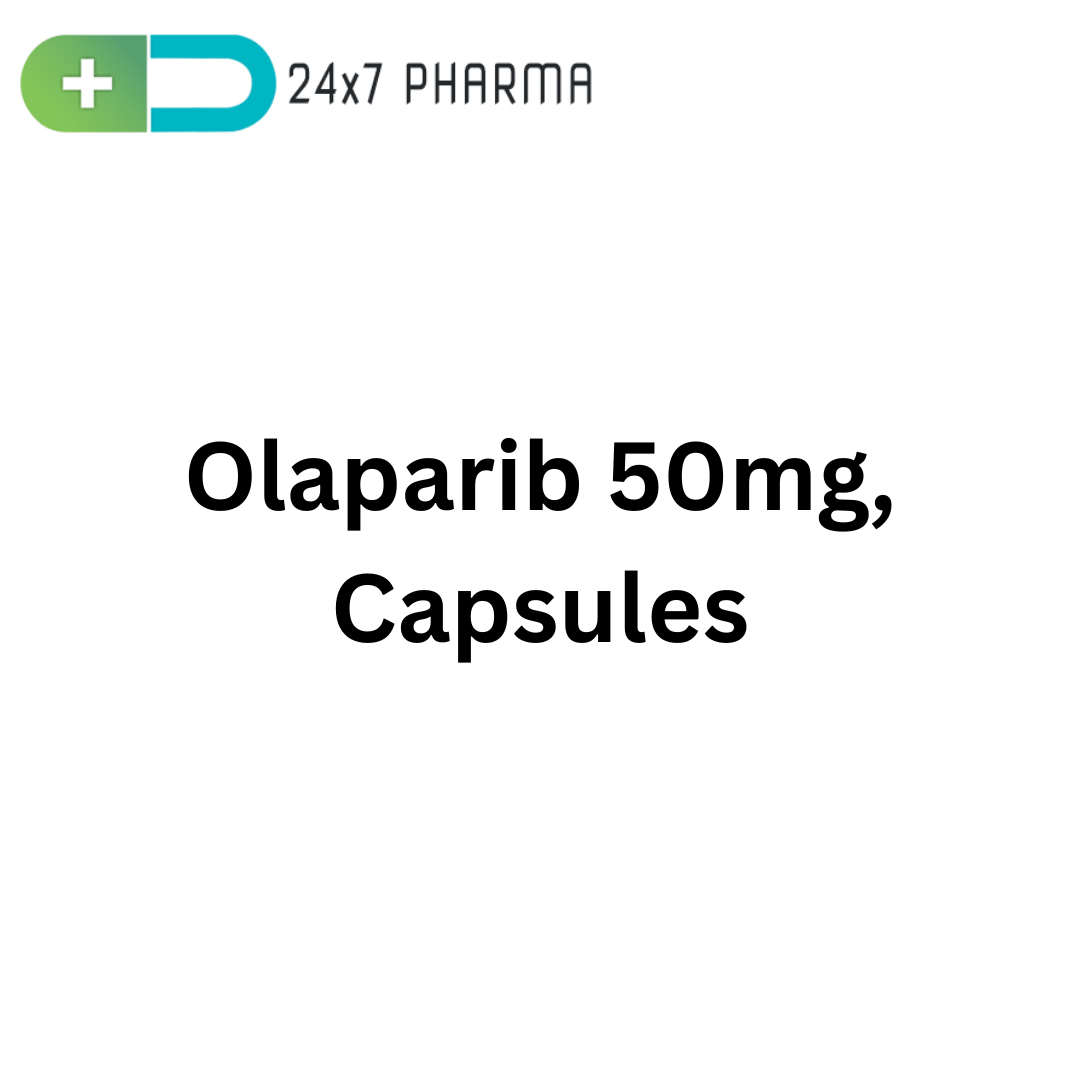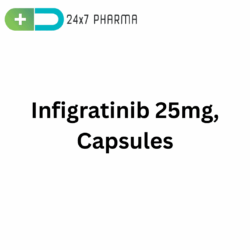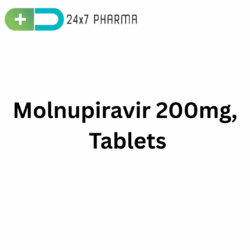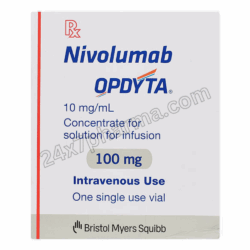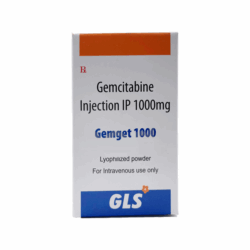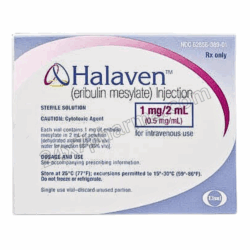Olanib 150mg, Olaparib Capsules
Olaparib is a strong oral poly (ADP-ribose) polymerase (PARP) inhibitor found in the targeted cancer therapy drug Olanib 150mg. It is manufactured as part of a new class of drugs designed to exploit weaknesses in cancer cells’ ability to repair DNA. The main purpose of Olanib 150mg is to treat specific malignancies of the ovary, breast, pancreas, and prostate, especially in patients who have mutations in the BRCA1 or BRCA2 genes. This precision therapy aims to improve survival and delay disease progression in specific patient populations.
What is Olanib 150mg?
Olaparib, a PARP enzyme inhibitor, is used in the formulation of the prescription anti-cancer drug Olanib 150mg. It belongs to the pharmacological class of targeted cancer therapies and is indicated for cancers driven by genetic mutations in DNA repair genes such as BRCA1/2. By interfering with cancer cells’ ability to repair themselves, Olaparib promotes cell death and halts tumor growth.
How It Works / Mechanism of Action
Olaparib works through synthetic lethality. Cells typically use PARP enzymes to fix DNA single-strand breaks (SSBs). The homologous recombination (HR) repair process is already compromised in tumors that have BRCA1 or BRCA2 mutations. The inability of the cancer cells to repair the damage caused by Olaparib’s inhibition of PARP results in a buildup of DNA breaks, genomic instability, and ultimately cell death.
This dual deficiency—lack of PARP function due to Olaparib and non-functioning BRCA-mediated repair—creates a selective toxicity toward tumor cells while sparing most normal cells.
How to Use / Indications
Olanib 150mg (Olaparib) is FDA- and EMA-approved for use in the treatment of:
- Ovarian Cancer: Maintenance treatment for people who have primary peritoneal, fallopian tube, or recurrent epithelial ovarian cancer and who are responding fully or partially to platinum-based chemotherapy.
- Breast Cancer: Using germline BRCA mutations to treat HER2-negative metastatic breast cancer.
- Pancreatic Cancer: Maintenance therapy for adult patients who have not responded to platinum-based chemotherapy and have germline BRCA mutations and metastatic pancreatic cancer.
- Prostate Cancer: For homologous recombination repair gene mutations in metastatic castration-resistant prostate cancer.
- Use is often based on companion diagnostic testing to confirm BRCA or HRR mutations.
How to Take / Dosage
Standard Dosage:
The typical dose of Olapnib is 300 mg per day, taken as 150 mg twice daily.
- Route: Oral, with or without food.
- Duration: Continued until disease progression or unacceptable toxicity.
Administration Advice:
- Swallow tablets whole.
- Do not crush or chew.
- Space doses approximately 12 hours apart.
Other Dosages
Olanib is also available in 100 mg formulations to accommodate dose adjustments due to:
- Renal or hepatic impairment
- Severe side effects
- Drug interactions
Dosage modification may include:
- 100 mg twice daily
- Temporary interruption
- Stepwise dose reduction
- Always follow the dose adjustments as advised by your oncologist.
Side Effects
Common side effects of Olanib 150mg include:
- Fatigue / Weakness
- Nausea and vomiting
- Anemia
- Diarrhea
- Appetite loss
- Dizziness
- Headache
- Indigestion
Serious side effects may include:
- Myelodysplastic Syndrome (MDS) or Acute Myeloid Leukemia (AML) – rare but potentially life-threatening.
- Pneumonitis
- Severe anemia or bone marrow suppression
- Routine blood tests are necessary to monitor for hematological toxicity.
Storage
- Storage Temperature: Store at 25°C (77°F); excursions permitted to 15–30°C.
- Packaging: Keep in the original container to protect from moisture.
- Keep out of reach of children.
- Do not use past the expiration date.
Benefits
Olanib offers targeted efficacy, particularly in genetically defined patient subsets:
- Improved progression-free survival in BRCA-mutated cancers.
- Delay in cancer recurrence post-chemotherapy.
- Oral administration provides convenience over IV chemotherapy.
- Reduces the need for frequent hospital visits in maintenance settings.
- Its ability to selectively attack tumor cells while sparing healthy ones is a breakthrough in personalized cancer care.
Prescription
Olanib 150mg is a prescription-only medication and should be:
- Prescribed by an oncologist or specialist familiar with cancer genomics.
- Initiated only after BRCA or HRR mutation confirmation via genetic testing.
- Accompanied by regular monitoring of complete blood counts, liver, and kidney functions.
Interaction
Olanib may interact with several medications, including:
- CYP3A inhibitors (e.g., ketoconazole, itraconazole) – may increase Olaparib levels and toxicity.
- CYP3A inducers (e.g., rifampin, phenytoin) – may reduce efficacy by lowering Olaparib levels.
- Anticoagulants (e.g., warfarin) – risk of bleeding.
- Chemotherapy agents – may exacerbate bone marrow suppression.
- Avoid grapefruit juice, which can alter drug metabolism.
- Always provide a complete medication history to your doctor to prevent dangerous interactions.
FAQs
Can Olanib 150mg cure cancer?
No, it is not a cure but can prolong survival and delay disease progression in certain cancers.
Is BRCA testing mandatory before using Olanib?
Yes, for most indications, genetic testing is essential to ensure the presence of BRCA or HRR mutations.
How long can I take Olanib?
As long as it is effective and tolerated, or until disease progression or severe side effects occur.
Conclusion
Olaparib represents a significant advancement in the treatment of BRCA-mutated breast cancer, offering patients a targeted therapy that improves survival outcomes with manageable side effects. While challenges related to access and affordability remain, ongoing advocacy and policy efforts aim to make this life-saving treatment more accessible to those in need. As research continues and treatment options expand, patients with BRCA-mutated breast cancer can look forward to a future with more effective and personalized therapies.

